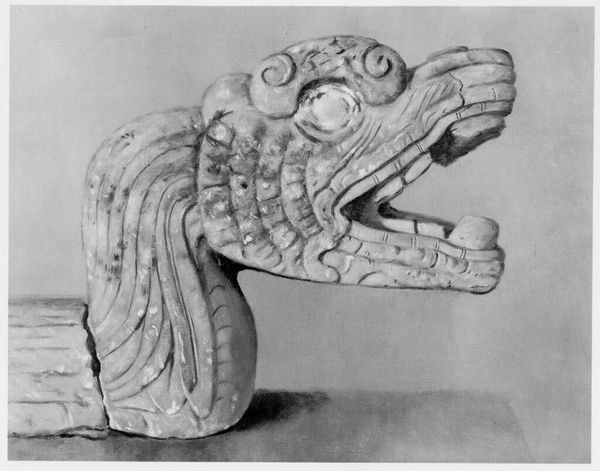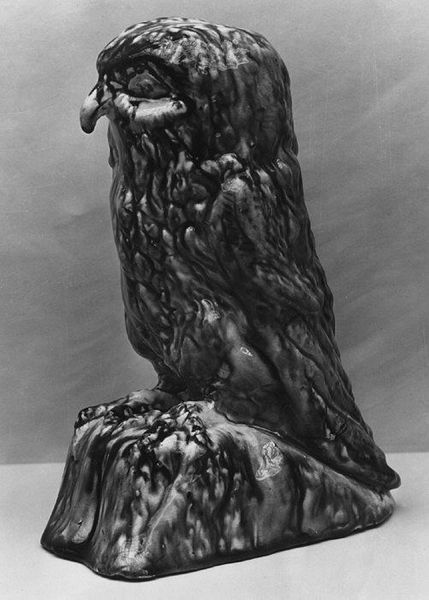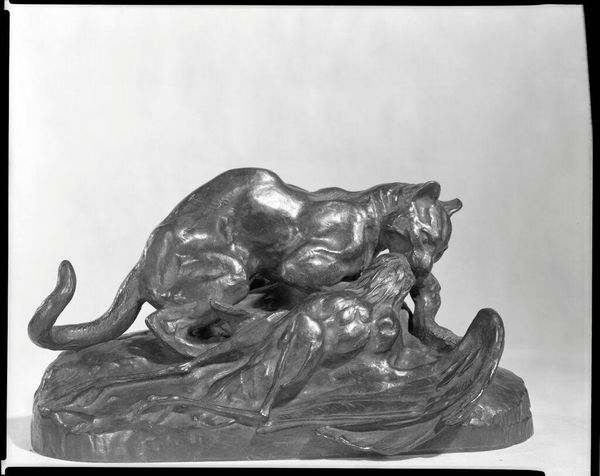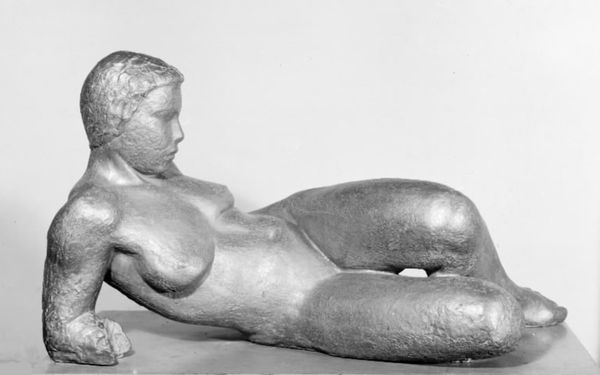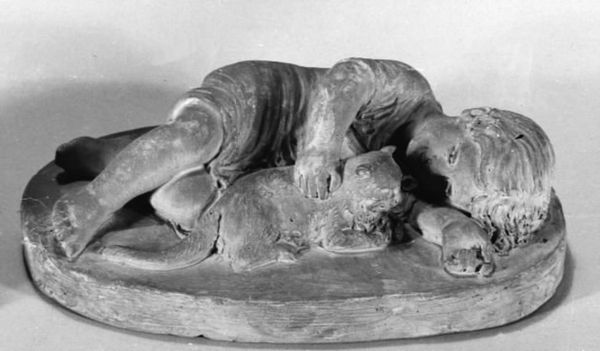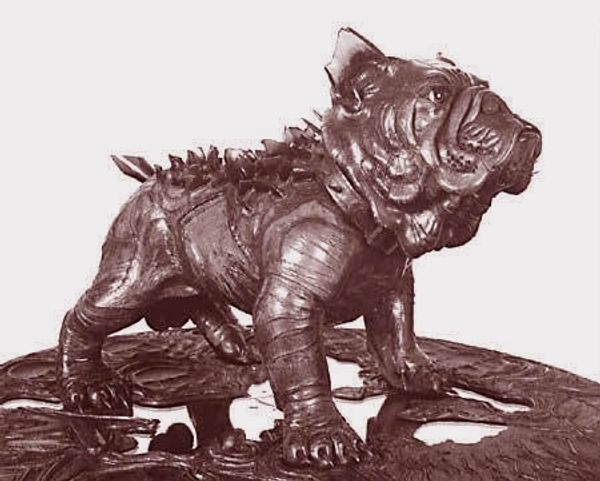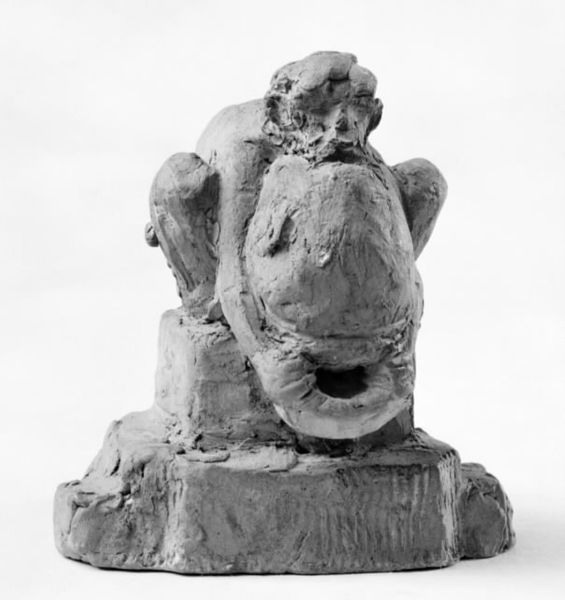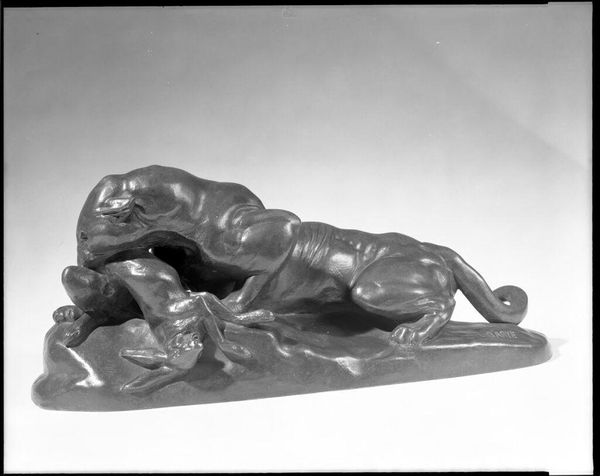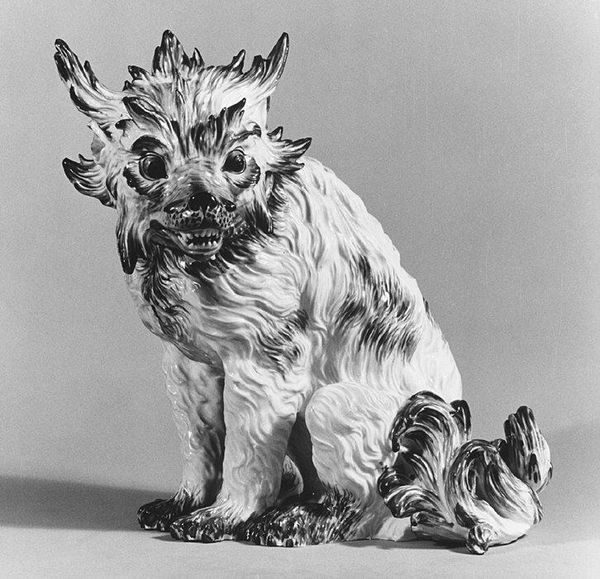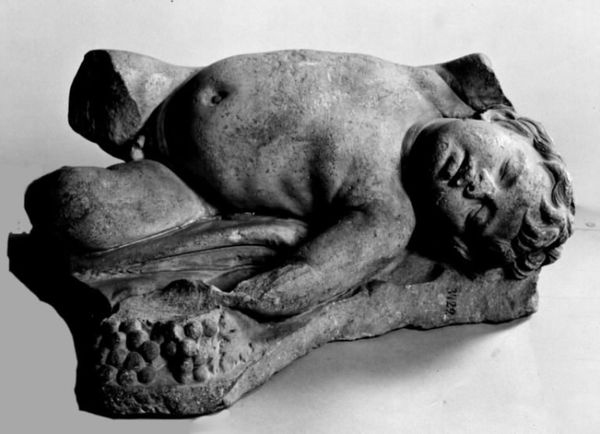
Dimensions: Width: 7 in. (17.8 cm)
Copyright: Public Domain
This bronze Dragon was made by Severo Calzetta da Ravenna, in Italy, during the Renaissance. The lost-wax casting technique was used to create this bronze sculpture. This process involves creating a wax model, encasing it in clay, melting out the wax, and then pouring molten bronze into the resulting mold. After the bronze cools, the mold is broken, and the sculpture is revealed. The surface is then finished through chasing and polishing. The dragon's intricate details, such as its scales and expressive face, showcase the artist's skill and the malleability of bronze. The material's inherent qualities of strength and durability give the sculpture a sense of permanence. The lost-wax casting process was highly specialized, requiring skilled artisans and a well-organized workshop. The Dragon reflects the economic and social context of the Renaissance, where wealthy patrons commissioned bronze sculptures to display their status. Understanding these materials, processes, and context allows us to appreciate the skill involved, and challenges any distinction between fine art and craft.
Comments
No comments
Be the first to comment and join the conversation on the ultimate creative platform.
